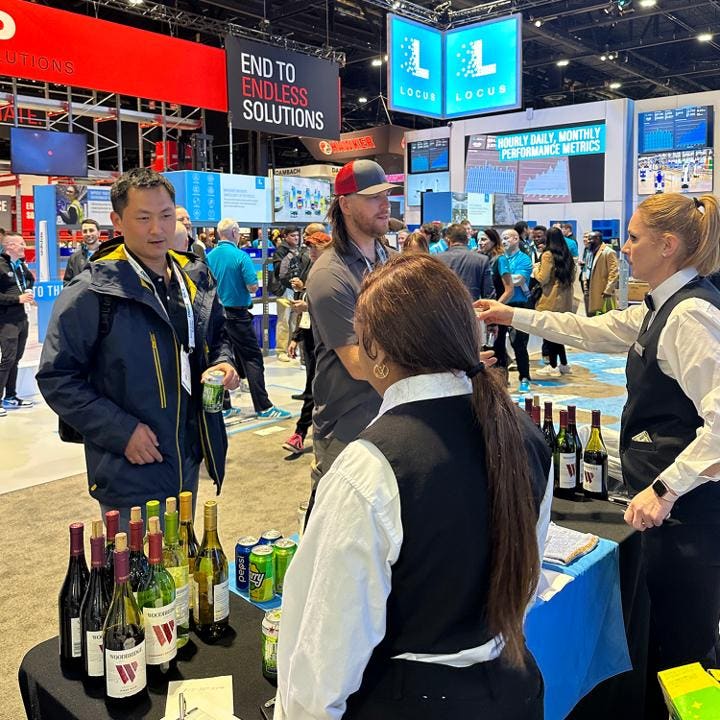The last MODEX show I went to was in 2016. This year I went to MODEX 2024. Wow! This show is massive! MODEX 2016 had 800 exhibits and 25,000 attendees. MODEX 2024 has 1,200 exhibits and they expect over 48,000 attendees by the end of the show on Thursday.
In 2016, I only remember three robotic firms at the show – Locus Robotics, 6 River Systems, and Fetch Robotics. These were autonomous mobile robots where the bots and pickers moved through the warehouse together and optimally engaged in picking multiple ecommerce orders simultaneously.
This year it is the year of the robot. 33 exhibitors had the word “robot” or “robotics” in their title. And almost all the large material handling vendors and systems integrators that don’t have the term “robotics” in their name, were also displaying bots.
In 2016, the Locus style bots were not yet proven. For these bots, 2017 was the year of the pilot. By 2018, large 3PL customers were willing to publicly speak about the benefits they got from these solutions.
This year what caught my attention are robots that have “hands” for picking cases or eaches. Each picking involves picking individual units and putting those items in a container. Until recently, each and case picking were just too difficult for bots. I viewed solutions from Swisslog, Knapp, and RightHand Robotics for each picking. CRG Automation was demoing pallet build. Several other suppliers were demoing similar types of solutions.
This kind of picking system involves 5 different technologies. First there are robotic arms. This is a mature technology that has been used for years in automotive manufacturing.
Secondly, at the end of the arm is a “hand” powered by suction cups. In the case of RightHand Robotics, suction cups are combined with mechanical fingers.
The solutions have compressors that provide the right amount of suction for picking different sizes and weights. There can be different arrays of suction cups. The hand might have 3, or 4, or more suction cups. For a light item, perhaps just the middle suction cup is used, for larger or heavier items, more cups are powered up. In Swisslog’s case, the arm selected the right “hand” for a job prior to the pick.
Vision systems combined with AI allow the system to know what suction cups to initiate and how much compression to use. Machine learning also comes into play. For example, if the system has trouble picking a particular item, an alert can tell a planner not to allow that stock keeping unit to enter the robotic picking queue.
Finally, complex software can be necessary. If you are floor loading a truck with containers of different sizes and weights, the software knows that the weight must be evenly distributed, that easily crushed items need to go on top, and there is a Tetris type solve to make sure as many items as possible can be loaded. Pallet loading requires a similar type of software solve.
I am not sure that these arms with suction cup hands have fully matured yet. One of the each picking solutions I saw put the wrong item in a bin. The solution expert working the demo said that a quality assurance process might be necessary to support this solution. Managers, of course, would prefer not to have to add an inspection process. Furthermore, the robotic solution picked slower than a human would and could not cover the same range of SKUs that a person could.
On the other hand, people burn out on this kind of task after a couple of hours and need to be rotated to a different task. A bot just keeps working. It is also increasingly tough to hire warehouse workers. Finally, a bot can work in an environment, hot and cramped, that a worker would not.
Jeff Cashman, a senior vice president of corporate development at Fortna, felt that the truck floor loading solutions were not quite there yet either. A parcel carrier might have five different size boxes that needed to be loaded onto a truck. The best solution Fortna tested could only reliably handle three different sizes. Fortna is a leading material handling and warehouse design firm.
But while I am not convinced that these solutions are currently fully mature, progress is rapid. I would not be surprised if we hear the same kinds of customer ROI validation stories in a year or two that the Locus style bots got back in 2018.
Read the full article here





